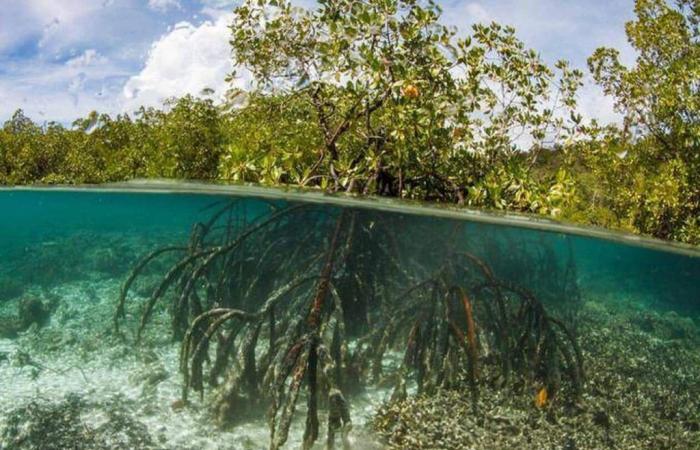
By Clémentine MALIGORNE.
In the fight against climate change and to achieve carbon neutrality, the Japanese archipelago has decided to restore and protect an entire natural ecosystem that has long been neglected, but is precious for the climate: “blue carbon”.
In its efforts to limit the impacts of global warming and to mitigate its damage, Japan has begun to turn to “blue carbon”. The archipelago is relying more and more on this method, which is still little used, often neglected, but effective. What exactly is it about? Explanations.
It is the same principle as “carbon sinks”, these artificial or natural reservoir mechanisms, such as forests, peatlands, meadows or even oceans, which capture and store excess greenhouse gases ( GHGs), mainly carbon dioxide (CO2), emitted by humans and their activities.
Read also: A carbon sink has been discovered in the middle of the Pacific, why is this good news?
Mangroves, seaweed meadows, salt marshes
“Blue carbon” refers to “ocean and coastal ecosystems” that sequester and store carbon over the long term, he explains. The Ocean Fondation. Concretely, we are talking here about mangroves (the plants found in marshes) but also about seagrass beds (underwater algae meadows), or even salt meadows (these natural meadows by the sea).
These marine vegetations are natural carbon reservoirs. Because they “capture atmospheric carbon (via photosynthesis) before taking it, thanks to their roots, into the subsoil”, explains on its website the Surfrider association which works to protect the ocean and the coast.
Read also: In Vendée, what is the scientific interest of the carbon contained in the salt marshes?
These ecosystems are “very efficient carbon sinks. They are up to 40 times more efficient per unit area than tropical forests,” emphasizes Surfrider. While they “representing only 0.2% of the surface area of the oceans, they store approximately 50% of the organic carbon buried in the ocean.” Other assets, they act as “buffer zones” by protecting the coasts, and are also known “for their ability to purify pollutants”, which makes it possible to improve the quality of coastal waters, notes the NGO.
However, these blue carbon ecosystems are threatened by human activity, but also by the effects of climate change. “Each year, approximately 340,000 to 980,000 hectares are destroyed worldwide,” Surfrider point.
Pioneering Japan
Japan was one of the first countries to understand the importance of protecting this “blue carbon”. For the past ten years, the government has been encouraging research in this area and supporting operations to restoration of these ecosystems. For example, theThe city of Hayama, a city near Tokyo, is working with fishermen and local schools to replant underwater meadows, the British newspaper reports. The Japan Times .
Read also: Blue Planet: The Ocean, This Unknown “Master of the Climate”
Proof of its commitment to these carbon sinks: early 2024, Japan has become the first country to include blue carbon in its national emissions inventory submitted to the United Nations, the British newspaper reports. In the fight against climate change, this inventory, transmitted to international institutions – France also does so – makes it possible to draw up an inventory of greenhouse gas emissions by major sectors of activity, and to guide environmental policies.
Read also: What is carbon neutrality?
For the moment, “Blue carbon ecosystems would have sequestered 0.03% of Japan’s annual emissions until March 2023,” according to The Japan Times. A drop in the ocean… However, since blue carbon officially contributes to Japan’s “net zero” objective, projects and requests for blue carbon “credits” from companies and municipalities have multiplied. Each application is evaluated by independent experts who check whether the project is viable in the long term. A nevertheless welcome effect for the climate, while carbon neutrality on a planetary scale seems a goal that is still far too distant.





